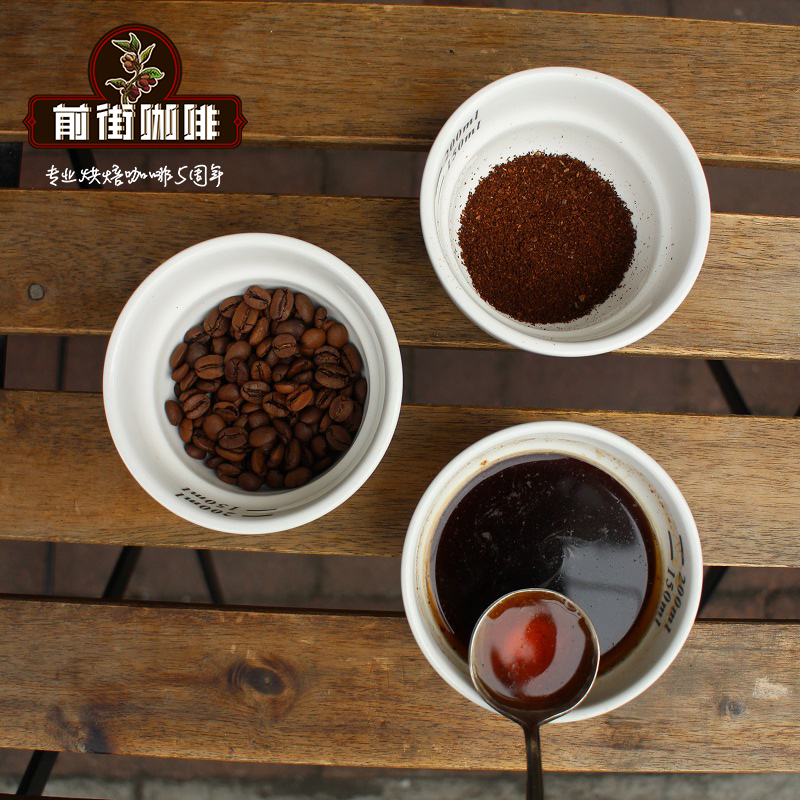Barrel fermented Coffee processing Technology | how about barrel fermented coffee? Introduction to fermented Coffee in barrel

Professional coffee knowledge exchange more coffee bean information please follow the coffee workshop (Wechat official account cafe_style)
Barrel fermented coffee can be said to be a hot way to treat coffee in recent years, so what about the technology of barrel fermentation to treat coffee? What kind of flavor will appear?
[refined washed whisky Shirley barrel fermentation]
"Sherry barrel" is used as an aging barrel by the Sherry winery in the whisky industry. Sherry is a famous fortified wine produced in the sunny Jerez region of southern Spain. Sherry must be aged through the Solera system (Solera System) in the process of making sherry.
Solera system essentially refers to the process of mixing sherry of different ages after sherry is fortified. In the Solera system, all the barrels are stacked according to the vintage, with the oldest sherry at the bottom and the youngest sherry at the top, extracting some of the wine from the bottom barrel each year for bottling and sales, and then extracting the appropriate proportion from the upper barrel to replenish it.
And exquisite washing Shirley barrel fermentation method is to pick back the coffee cherry first delicate washing treatment, after washing treatment, these processed coffee cherries into a whisky into the Shirley barrel fermentation in a low temperature environment of 15-20 ℃ for 30-40 days, and then dry in the shade; Shirley barrel fermentation method makes the coffee has a stunning aroma, thick taste.
[brandy barrel fermentation]
After picking, the coffee cherries are carefully washed, then fermented at low temperature in brandy oak barrels for 30-40 days, and then dried in the shade. Finally create a taste experience of brandy, litchi, dried longan, honey, melon and other flavors.
[red wine treatment]
It can also be called red wine treatment, which is inspired by the brewing technology of red wine. At present, only eight estates in Colombia have successfully introduced coffee beans treated with this method to the market. According to the data of these eight estates, we can roughly divide the types of red wine treatment into: acetic acid fermentation (Aerobic aerobic fermentation), lactic acid fermentation (Anaerobuic anaerobic fermentation), mixed fermentation (Mix Fermentation=Aerobic+Anaerobuic).
The traditional treatment method is difficult to control the changeable fermentation degree of coffee beans. But red wine treatment rules can ensure the quality of coffee beans by controlling PH value, even temperature and humidity, and airtight fermentation makes aroma less volatile.
Next, let's talk about the specific process of fermentation. First of all, Colombian farmers carefully pick coffee cherries and carefully select coffee red fruits to ensure that among the coffee cherries selected for processing, the percentage of immature cherries is less than 2%, defective beans less than 3%, and floating beans less than 5%.
The selected coffee cherries are placed in a specific container by the farmer's uncle, which should have a device similar to a red wine fermentation suppository or a single exhaust valve. In this way, carbon dioxide can be spilled through the device to control the concentration of air in the container. At this time, the coffee cherries in the container are fermented with acetic acid, and the beans are relatively bright, clean and citric acid.
According to Sasa's description in the competition, the processor injected carbon dioxide into the container to prevent oxidation from producing volatile acid, a process known as lactic acid fermentation, which produces malic acid and stone acid, which is relatively stable, so the beans fermented with lactic acid have a more mellow acidity, with cheese, nutty and creamy flavor.
END
Important Notice :
前街咖啡 FrontStreet Coffee has moved to new addredd:
FrontStreet Coffee Address: 315,Donghua East Road,GuangZhou
Tel:020 38364473
- Prev

Why are so many boutique coffee washed? test the characteristics of washed coffee cups.
Professional coffee knowledge exchange more coffee bean information Please follow the coffee workshop (Wechat official account cafe_style) washing the collected berries use a peeling machine to separate most of the pulp from the coffee beans, then put the shell beans into a clean sink, soak them in water and ferment to completely remove the residual pulp layer. Through washing, unripe beans and
- Next

What are the treatments for raw coffee beans? what are the differences in flavor between them?
The process of natural solarization is the simplest. The fruit begins the process of sun drying without treatment after picking. This is the oldest method of treatment in existence. This method is still used in places such as Ethiopia and Brazil. Natural solarization is most common in areas where water resources are scarce. The drying process usually lasts about 4 weeks. The way to deal with it must be very
Related
- What is the meaning of lactic acid fermentation with coffee bean treatment?
- How to judge the state of foam by sound?
- How does the latte pull out the unicorn pattern? Come to get for a little trick to improve the flower pull!
- Will flower pulling affect the taste of the latte?
- Do you know the history of coffee?
- The difference between honey treatment and sun washing what is raisin honey treatment?
- What kind of milk can a novice use to make coffee foam to keep the foam longer? The correct method and skills of milking tutorial sharing
- Why do washed coffee beans taste sour? Flavor characteristics of washed Coffee
- Introduction to the skill of how to practice the size and height of water injection around the circle of hand-brewed coffee
- How do beginners practice coffee flower drawing from scratch?

